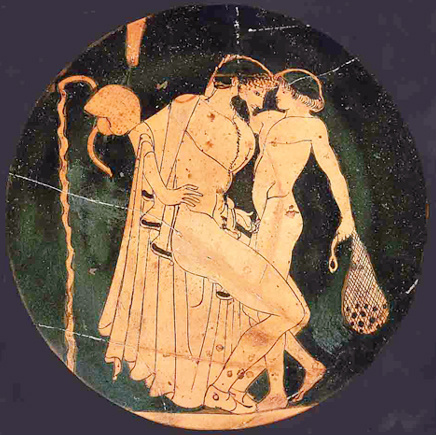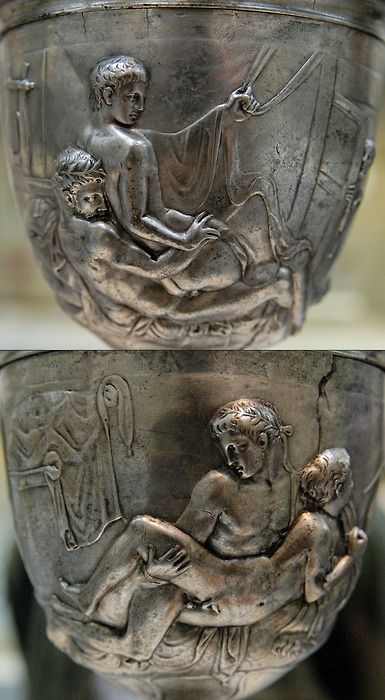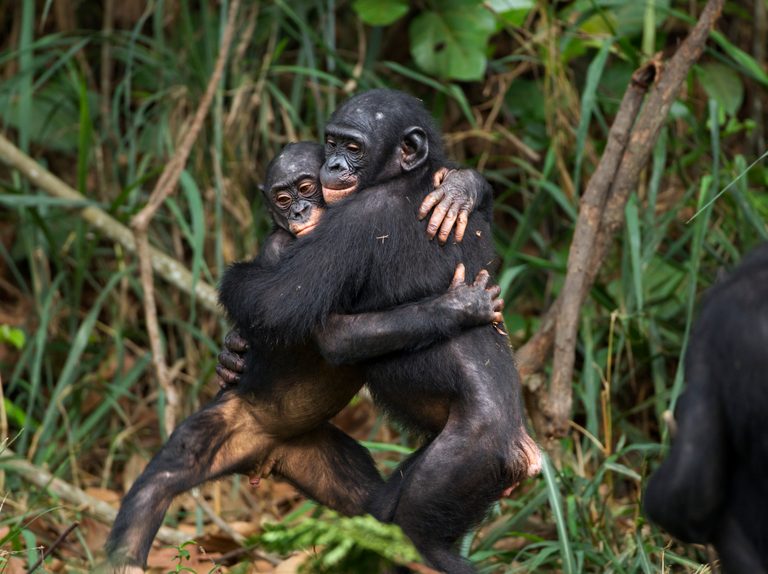Pastor Frank Senn originally posted these responses to questions he received on his website Frank Answers. In my opinion, he offers some of the most balanced answers to real-life questions.
From His Site:
Question: Paul defines homosexuality in Romans 1:26-27 as something unnatural. “Women exchanged natural intercourse for unnatural, and in the same way also the men, giving up natural intercourse with women, were consumed with passion for one another.” How can Christians tolerate homosexuality if it is contrary to nature, and by implication God’s design and intention?
There are assumptions in the question that need to be challenged. First of all, neither Paul nor people in his day knew the category of “homosexuality.” That is a term that comes out of late 19th century clinical sexology, just as heterosexuality does. Sexuality was more fluid in the Greco-Roman societies that Paul knew than modern psychological categories make it out to be for our society. In fact, the modern homosexual/heterosexual binary was proven to be too rigid in Kinsey’s famous study of male sexual practices and orientations. Very few people report themselves as exclusively same-sex or opposite-sex “responsive” in their sexual experiences or practices.

There was a lot of same-sex activity in the Greco-Roman world. In ancient Athens men “mentoring” post-puberty boys was common practice, and is graphically depicted on Grecian vases. Roman free men routinely had sex with their slaves, including boys, because sex with free boys was forbidden. Prostitution was ubiquitous and was regarded as a safety valve to protect marriage. There were male as well as female prostitutes. Many were in the service of temple cults such as the temple of Aphrodite in Corinth. Some of these male cult prostitutes were slaves that had been gifted to the Temple. Of course, in a port city like Corinth there were plenty of male prostitutes working on their own.
The men who had sex with boys or male prostitutes were usually married with children. The Greco-Roman world knew of men who had a preference for men (or boys), but such men were also usually married with children. So most men in the Greco-Roman world would not have fallen into the category of “homosexual” as an exclusively same-sex orientation in spite of the amount of same-sex activity that was commonly practiced. But the fondness for same-sex activity was sculpted even into drinking cups such as the Warren Cup in the British Museum

It is clear that Paul came into the Greco-Roman world thundering against porneia in 1 Corinthians 7 and “unnatural” sexual practices in Romans 1. Porneia has been translated as “fornication” in English versions of the New Testament whereas Paul was referring specifically to prostitution and particularly sacred prostitution in Corinth. This was an issue that Moses and the prophets had to deal with in ancient Israel since Hebrew men and women could work as cult prostitutes in Canaanite shrines and temples and is probably the “abomination” referred to in Leviticus 18:22 since this section is dealing with pagan practices.
In the Letter to the Romans Paul castigated men having sex with men as giving up natural sex for unnatural and women having sex in an “unnatural” way. Some have seen the possibility of interpreting St. Paul’s term physis (nature) as “custom” (a cultural concept) rather than “nature” as a biological concept because of the way he uses the term in other contexts. Roman culture in particular did not countenance free Roman men taking a submissive role in sex, nor women taking a dominant role. This would have been “contrary to nature” both in the sense of what was culturally acceptable and what was observed in the natural world. By having intercourse with other men some men had to be submissive, that is, be penetrated, and women taking a dominating role in sex (presumably with men, since the text doesn’t say “with other women” to parallel men having sex “with other men”), would be unacceptable. But In fact, this is what Greeks and Romans observed in nature. The male of the species mounted the female.
In Roman society, a free man should never be in a submissive role and a woman should never be in a dominant role. But it was the social status of slaves to be submissive. So male-on-male sex was usually with slaves with the Roman free man always in the dominant position. But this raises the question of what Christian slaves were to do if their master required sex with them since they were told to obey their master (Ephesians 6:5-8, Colossians 3:22-25, 1 Timothy 6:1-2. 1 Peter 3:18-21). The church might influence the behavior of Christian masters toward their slaves but would have no influence on pagan masters. Since slaves had little or no say in the matter, sex with slaves could (from our modern perspective) come under the category of rape. Only when Christianity was a state religion could the church influence civil laws against poineia in general and same-sex practices in particular. (See Kyle Harper, From Shame to Sin: The Christian Transformation of Srexual Morality in Late Antiquity (Cambridge, MA: Harvard University Press, 2013).
However Paul might have understood “nature,” there was a theological backdrop to his statements about sexual practice in Romans 1: the deeply rooted association of idolatry with sexual immortality. The sexual corollary of monotheism is sexual fidelity. Sexual promiscuity is associated with polytheism: many gods, and many sexual partners of any gender. In the imperial court, sexual acts seem to have occurred any and every which way under emperors like Tiberias, Caligula, Nero, and Claudius. This was public knowledge. Yet there were also Stoics in Roman society who shunned any displays of passion, which Paul would have also known about.
It is noteworthy that in the lexicon of terms used by Paul, kinaidos is missing. This word was used to designate the truly sexually deviant person in Greco-Roman society. We might translate kinaidos as effeminate or queer. Classical writers defined these queers by their physical characteristics: their walk, their gaze, their tone of voice, and the way they held their heads. It is the word that is closest to “homosexual” in Greco-Roman culture, and that person is never mentioned in the letters of Paul. In contrast, the malakos (“soft one”) of 1 Corinthians 6:9, often construed as a homosexual in modern interpretations, was as likely to surrender to the love of women as to the love of men, and the arsenokoites (the “fucker”) in 1 Corinthians 6:9 is presumed to be the aggressive one in the male coupling, but who might be married with children.
Paul’s lack of commentary on the kinaidoi, who might have engaged in a same-sex loving relationship, and certainly would fall under our modern category of “queer,” suggests that those who came under Paul’s condemnation were heterosexuals who engaged in same-sex activity for the sake of lustful indulgence. He is not explicitly condemning those whom we would call homosexuals and is not addressing the idea of gay love, as we have come to experience it.
It is the “nature” of the homosexual to have an exclusively same-sex attraction. As boys come of age sexually and enter the world of dating, they discern this in themselves. They are more attracted to boys than to girls. They are essentially homosexual. Whether they express that outwardly depends on the availability of other boys who are also attracted to boys, the feelings they get from being in a relationship, the permission that society gives them to explore their desires, and the kind of cultural support they might have from family, friends, peers, and religion. Social permission and cultural support might be withheld. But their desires and feelings are deep within and may find a way out. No so-called “conversion therapy” will change who they are.

Sexuality is not just one thing. Mark Johnson points out in The Meaning of the Body (Chicago: University of Chicago Press, 2007) that the body itself is not just one thing. The body is at least five things simultaneously. The body is biological, ecological, phenomenological, social, and cultural (Johnson, pp. 274-78). Let me give examples of these meanings and their impact on our understanding of the homosexual body.
The Biological Body
There’s the hotly debated issue of whether homosexuality is based on biology or influenced by culture. Nature vs. nurture. The scientific hunt has been on for a “gay gene” or maternal chromosomes that biologically determine homosexuality but so far the search seems elusive. The mystery of why one identical twin is hetero and the other twin is homo, since both were raised in the same way in the same family and presumably had the same formative experiences, remains a mystery. Yet in the “meaning” of the body, this would seem to be a false alternative.

Many boys experiment with their sexuality as they are going through adolescence. Because some who have sex with boys end up preferring girls, the conclusion is drawn that homosexual behavior is a stage in sexual development that one outgrows or can overcome. That would imply that some are “stuck” in that stage and can be helped by therapy. This has led to conversion therapy techniques that do harm to the boys who are subjected to them. The fact is that many boys “experiment” because they already have a sense that they are attracted to other boys. Being homosexual or same-sex-oriented is their “nature.” They are sexually attracted to the male body.

Biologically sex is about procreation. Certainly, the survival of the species is an important biological issue. Yet same-sex behavior has been observed in many animal species, including mammals and the higher primates. Since same-sex behavior exists throughout the animal world we cannot say categorically that homosexuality is “contrary to nature.” The scientific issue is to understand why “nature” provides for some members of the species to be attracted to another of the same sex.

Same-sex behavior has been observed in animal species as well as among humans, although it would be inappropriate to refer to the animal’s same-sex activity as gay. Indigenous peoples throughout the world have provided for what we call homosexuality within their social structures. All older boys and young men in those tribal societies have engaged in homosexual behavior, usually with older youth or adult partners who served as mentors. It seems that the purpose homosexual behavior serves in traditional societies is to allow for hormonal-driven males to have sexual release while waiting until they are more psychologically mature for marriage and child-rearing. But it is still expected that mature males will mate with a female and produce offspring for the tribe. Even so, some males continue to enjoy sexual relations with other males.

Same-sex behavior was notoriously practiced by ancient Celts, who were more attuned to nature than we are. In the Celtic warrior society, men usually slept with other men, and occasionally with their wives. To such ancient peoples, homosexual behavior would not have been regarded as “contrary to nature.” It might even have served the purpose of population control in situations of limited food supplies. (Think of Ireland’s notorious potato famines.) What was “contrary to nature” to the Romans was Celtic adult men’s egalitarian approach to sex by taking both active and passive roles. Free adult men taking the passive or receiving role would have been taboo for the aggressive Roman males.

 modern Celtic men enjoying each other’s companionship
modern Celtic men enjoying each other’s companionshipA good resource on same-sex behavior in the animal world, among indigenous people, and in world civilizations is James Neill, The Origins and Role of Same-Sex Relations in Human Societies (Jefferson, NC: McFarland, 2009).
The Ecological Body
Biologically we have sexual urges, but we must have the opportunities to express them. This is where ecology or environment affects sexuality. For example, heterosexual men notoriously engage in homosexual acts in prisons where no women are available. Boys in all-male environments such as boarding schools engage in homosexuality exploration. Men in male-only environments (in prison, the military, on ships at sea, or in some working conditions) will find sexual release by having sex with other men. Men who are seeking same-sex connections congregate in urban environments where making those connections is easier. Gay bars are prime places for cruising and socializing.
The Phenomenological Body
Sex is phenomenological in that we have experiences of it. Feelings about those experiences encourage repetition or aversion. Some homosexual men have had intimate relations with women and have even gotten married and fathered children. But they find the opposite sex unfulfilling. They have homoerotic urges that have been suppressed but really desire same-sex experiences and maybe even a relationship with another male. They find it pleasurable to be in the company of another man who understands their needs and desires and to have sex where negotiation is minimized in comparison with an opposite-sex relationship.
The Social Body
Sexual practices are both socially controlled and culturally conditioned. Homosexuality has been both legally tolerated and severely persecuted, sometimes by a change of administrations in the same society. Same-sex marriage existed in the Roman Empire since the time of Nero (ca. 65 AD) but was banned in 342 by the co-emperors Constantius and Constans under pressure from Christian bishops. Spanish conquistadors in Mexico and Central America found same-sex relations taken for granted among indigenous people and put to death those who engaged in these “abominations,” just as often happened in outbreaks of anti-sodomy crusades in Christian Europe. Yet even communities in the same country have responded differently to sodomy. Late medieval Venice burned sodomists at the stake; late medieval/early Renaissance Florence gave them a wink and a nod. In many Western or Westernized countries today same-sex marriage or unions are legalized. In other countries, especially in the Middle East, practicing homosexuals may still be publicly flogged or put to death.

The gay man like the straight man would like to settle into housekeeping with a partner. We know this from ancient literature and it continues to be true today. Many gays and lesbians were in domestic partnerships for years before same-sex marriage became legal. But gay men and lesbians enter into marriage as equals since patriarchalism or matriarchalism doesn’t exist in a same-sex world. As heterosexual couples strive to realize equality in their marital relationship, they might be able to learn from the model of gay/lesbian equality in married partnerships.

The Cultural Body
Culture refers to what is acceptable practice in societies and sex has been at the mercy of custom and science, which have often joined forces. For example, a little more than a hundred years ago “modern science” was waging a war on child masturbation and claiming negative physical and mental health consequences of doing it that are now totally discredited. Today masturbation is a common, safe activity that can offer many sexual health benefits. Yet some religions and cultures continue to try to suppress it and cause youth to feel guilty about doing it. Gays masturbate with abandon and sometimes mutually with partners.
Many heterosexual practices are accompanied by guilt and shame because of Western sexual mores, sometimes even in practices on the marriage bed. Homosexuality is most counter-cultural in its guilt-free, shameless approach to sex. As Toby Johnson wrote in Gay Perspectives (Austin, TX: Peregrine Ventures, 2008), “Our homosexuality tells us that sexplay is a much richer experience than just fucking. Because there is no clear purpose to homosexual sex—no ‘natural’ goal, such as the insemination of the female—all of it is sexplay” (p. 137). This isn’t to say that some vestiges of guilt and shame don’t linger in the homosexual’s mind, or those sexual performance standards aren’t ever an issue. But in principle, gay men are guilt free to indulge in the joys of sexplay in which they ravish their partner’s entire body without rushing to a climax.

What homosexual practice offers to our practice of sex today is acceptance of the fact that having sex is pleasurable. Christianity has from the beginning tried to suppress the pleasures of sex even in the marriage bed. In fact, for St. Paul marriage was a concession to the weaknesses of the flesh. If the unmarried cannot remain single and self-controlled, “It is better to marry than to burn” (1 Corinthians 7:9). In fact, ancient Christianity idealized virginity above marriage. The radicality of the Christian view of the desires of the flesh was described by Clement of Alexandria toward the end of the 2nd century. He appreciated the continence encouraged by the stoics and the restraint of passion taught by the philosophers, but he wrote that our Christian ideal “is not to experience desire at all.” St. Augustine admitted that marriage was divinely instituted for the purpose of procreation but the eating of the forbidden fruit caused our primal parents to feel sexual sensations in their bodies that were beyond their control (libido). He knew this in his personal life and writes about it in his Confessions. See Peter Brown, The Body and Society: Men, Women, and Sexual Renunciation in Early Christianity, 20th Anniversary Edition (New York: Columbia University Press, 2008).

The idealization of virginity meant that the most spiritual Christian position regarding sex is no sex at all. Throughout the middle ages, the Catholic Church prized celibacy above marriage and insisted that pleasure should be separated even from the marital act of procreation. If the couple enjoys their sex too much it is a venial sin that should be confessed. Martin Luther’s religious and social revolution was to prize marriage as God’s command and promise above celibacy. Once he discovered them, Luther delighted in the pleasures of the conjugal act and the joys of marriage and family life. The other Protestant reformers followed Luther’s lead, if not always with his exuberance. Calvin urged moderation in the pursuit of sexual pleasure so that humans don’t act like “beasts.” Little did he know how close to the beasts we are in the animal kingdom.
Protestants like Catholics confined sex to the marriage bed, although in modern times co-habitation has been accepted as a fait accompli. While there is disagreement about same-sex marriage between and within denominations, among Christian denominations only some Protestant churches have regarded it as a social good. A stable relationship full of sex, affection, romance, and mutual caring is a blessing to be cultivated. It might even eventuate in the responsibilities of parenting if gay partners offer foster care parenting for children who have been messed up by their straight parents, perhaps leading to adoption. (Some states still forbid gay adoption.)

I think in our society today we’re far removed from the unbridled sexual activities Paul encountered in the Greco-Roman world into which he brought the gospel of salvation in Jesus Christ. Those who “exchanged natures” were sinners who “fall short of the glory of God,” like everyone else about whom St. Paul says “we are justified by God’s grace as a gift” (Romans 3:23). Sometimes conservative Christians think we’re regressing back into the perversions of that Greco-Roman world. But the social structures of prostitution and slavery that supported pervasive porneia (in the flesh, not virtual) and the readily available release of eros provided by slaves no longer exist. Marriage and family have had their ups and downs with social changes, but my own experience with gay people teaches me that they desire to preserve these traditions and even make them better. Since the AIDS epidemic of the 1980s, gay men are considerably less promiscuous. They want to make marital commitments even at a time when many young straight people are afraid to do so. Same-sex marriage is not an assault on the family; it is an affirmation of the family.
Gay people have been cut off from the traditional structures of society for many centuries. They have looked at our social structures as outsiders and from their own experience, they have discerned what is good and what is bad in these structures. The “nature” of homosexuality, even from a biological perspective, is to complement and shore up deficits in human society. That’s what we learn from the animal kingdom and the cultures of indigenous peoples. The presence and availability of same-sex people can be a blessing to our society rather than a curse. That’s why gays and lesbians should be at least “tolerated” by Christians, if not affirmed, and welcomed into our churches with open arms and full inclusion in congregational life and ministry. As we get to know same-sex couples, we will discover that gay life is about more than sex. Homosexuals have gifts to offer that have been and will continue to be a blessing to the church and society.
I will add that at a time of culture wars and political polarization when anti-LGBTQ legislation is snaking its way through state legislatures and court systems, and as book-banning efforts threaten the work of our schools, universities, and libraries, the best antidote is to actually get know LGBTQ people and hear their stories. Many of these people are members of our own families and in our own churches and workplaces. Some of them we know. Others are waiting for an opportunity to experience the liberating moment of “coming out” to claim the “nature” that lies suppressed within them. It is also liberating for us to know what Scripture actually says and what it doesn’t say, but that we have read into it from our cultural biases.
Editor’s Note – While I applaud Pastor Senn’s work, it misses one area that deserves mention. There are those both in and out of the church that hates their longings and do not want to have the feelings that they have. To them, as I do with all things, there is a need to talk directly to Jesus yourself and see how He sees you. Having Talked to others who have been “gay” who have talked with Jesus can testify that it changes everything. Some still live with their feelings but have found control and peace, while others have found the freedom they sought after. An understanding of His love and how it applies to whatever circumstance you are facing. Look at our article on Hearing God.
Original piece by Pastor Frank Senn
